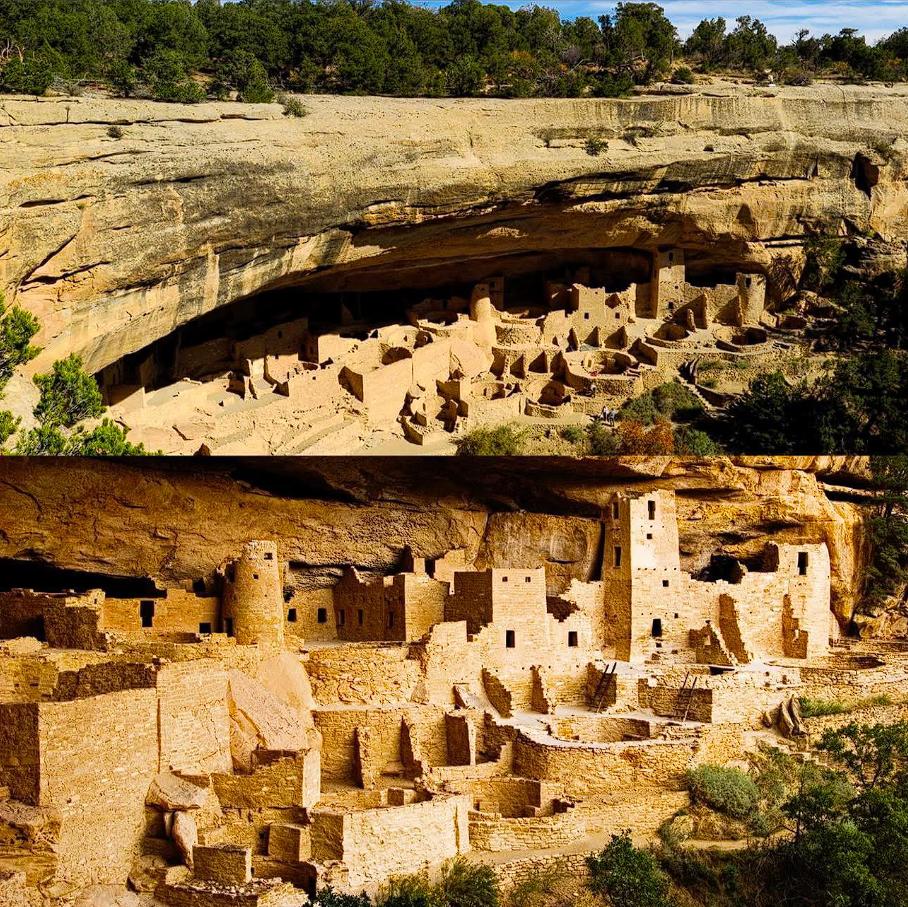Cliff Palace: A Timeless Testament to Ancient Ingenuity and Spirituality
When you hear the name Cliff Palace, it’s impossible not to picture a monumental structure perched high on the cliffs of southwestern Colorado, a marvel of ancient architecture that stands as a symbol of the Ancestral Puebloans’ ingenuity. Yet, beyond its awe-inspiring beauty and grandeur lies a deeper story of community, spirituality, and mastery over the harsh environment of the Colorado Plateau.
Early History: The Rise of the Ancestral Puebloans
A Struggle for Survival
The Ancestral Puebloans, also known as the Anasazi, began settling in the American Southwest around AD 1000. Their early years were defined by hardship and survival in a challenging environment. Yet, from these struggles arose a culture that would become one of the most advanced and innovative of its time. By AD 1190, the Ancestral Puebloans had begun constructing Cliff Palace, a monumental feat of architecture that would stand for centuries as a symbol of their resilience and creativity.
The Vision for Cliff Palace
The decision to build such an extraordinary dwelling was not made lightly. Located high in the cliffs of Colorado’s Mesa Verde National Park, Cliff Palace was strategically built into a massive alcove, providing natural protection from the elements. With over 150 rooms and 23 kivas, this complex was more than a simple dwelling—it was a vibrant community center, a place where daily life and spiritual practices intertwined seamlessly.
The Architecture: A Marvel of Ancient Craftsmanship
Defying Gravity: The Construction of Cliff Palace
What makes Cliff Palace truly remarkable is its design. Using sandstone, mortar, and wooden beams, the Ancestral Puebloans constructed a multi-story building that seems to defy gravity. The structure clings to the canyon walls, creating a visually stunning effect as it appears to be suspended in mid-air. This ingenious construction method demonstrates the Ancestral Puebloans’ deep understanding of their environment and their ability to master it, even in such a remote and challenging location.
The Sacred Design: Spiritual and Communal Living
Cliff Palace was more than just a residence; it was a sacred space. The presence of 23 kivas—ceremonial chambers used for spiritual rituals—speaks to the importance of religion and spirituality in the daily lives of its inhabitants. These kivas allowed the Ancestral Puebloans to connect not just to each other, but to the earth and the cosmos, creating a bond between the spiritual and physical worlds. The design of the structure itself reflects this connection, with its alignment to the natural landscape and the way it utilizes the environment to foster community and spiritual growth.
The Legacy of Cliff Palace: A Cultural Monument
A Window Into the Past
The story of Cliff Palace is a testament to the enduring legacy of the Ancestral Puebloans. The ruins of this cliff dwelling offer us a glimpse into a civilization that valued sustainability, community, and spirituality. It stands as a reminder of the remarkable achievements of the people who built it, showcasing not only their architectural brilliance but their ability to adapt to and thrive in an often unforgiving environment.
The Continuing Legacy: Preserving the Past
Today, Cliff Palace continues to be a symbol of the Ancestral Puebloans’ cultural and spiritual resilience. As one of North America’s most extraordinary archaeological treasures, it draws visitors from all over the world, offering them the chance to witness firsthand the ingenuity of a civilization that has long since disappeared. Yet, the legacy of Cliff Palace endures, preserved through its ruins and the lessons it imparts about human creativity, community, and spirituality.
Cliff Palace: A Monument to Human Ingenuity
The Timeless Appeal of Cliff Palace
The story of Cliff Palace isn’t just about ancient architecture—it’s about the enduring human spirit. It’s about the will to survive and thrive, to create something that stands the test of time, and to build a legacy that transcends the generations. The Ancestral Puebloans may have left their cliff dwellings behind, but the lessons they impart still resonate today, reminding us of our own potential to shape the future.

CÁC TIN KHÁC
Mary Walton: The Forgotten Inventor Who Helped Clean Up America’s Cities
Tomb of Queen Nefertari in the Valley of the Queens, Egypt
Discover the Hypostyle Hall of the Temple of Hathor at Dendera
Venus de Losange: Unveiling the Mystery of a 20,000-Year-Old Paleolithic Icon